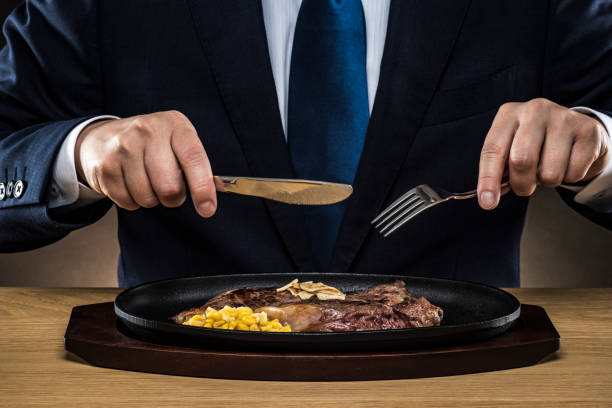In the world of culinary arts, understanding and practicing the nuances of dining etiquette, particularly with respect to knife usage, is crucial for any kitchen professional. Whether youre serving in a fine-dining restaurant or crafting an authentic Italian experience for guests, grasping the intricacies of Italian dining knife etiquette can elevate your service and enhance the dining experience. Let's delve into the essentials of this elegant tradition.

The Importance of Knife Etiquette
Dining etiquette is more than just a set of rules; it is a reflection of culture and sophistication. For kitchen professionals, mastering Italian dining knife etiquette is essential not only to impress guests but also to uphold the authenticity of Italian culinary traditions. The way one handles a knife at the dining table speaks volumes about their understanding of cultural nuances and respect for the culinary art.
Understanding the Basics
At the heart of Italian dining knife etiquette is the principle of respectrespect for the food, the chef, and the dining companions. Here are some fundamental rules:
- Knife Placement: The knife should be placed on the right side of the plate, with the blade facing inward. This placement is not just tradition but also a practical way to ensure safety and ease during dining.
- Cutting Technique: Unlike the American style of cutting food into smaller pieces before eating, the Italian style encourages cutting only one bite at a time. This ensures that the food remains fresh and that each bite is savored.
- Resting Position: While taking breaks during the meal, the knife should be rested on the plate at a slight angle with the blade facing inward, signaling to the server that you are not yet finished.
Advanced Techniques for Professionals
For those in the culinary profession, understanding the advanced aspects of Italian dining knife etiquette can set you apart:
- Pairing Knives with Courses: Different courses may require different knives. For instance, a steak knife is appropriate for meats, while a butter knife is used for bread. Knowing which knife to provide can enhance the dining experience.
- Serving Suggestions: When presenting a dish, the knife should be positioned to the right of the plate, with the handle easily accessible to diners. This demonstrates thoughtfulness and attention to detail.
- Knife Skills: Sharpening your knife skills can also improve your dining etiquette. To learn more, you can explore tips on how to sharpen Wusthof knives.
Common Pitfalls and How to Avoid Them
Even the most experienced professionals can make mistakes. Here are some common pitfalls to avoid:
- Improper Knife Handling: Holding the knife incorrectly can lead to food mishaps and potential injury. The proper grip involves holding the handle firmly while using your index finger to guide the blade.
- Miscommunicating with the Server: Placing the knife and fork in the wrong position can confuse servers. Familiarize yourself with the universal signals of placing utensils parallel on the plate to indicate that you have finished your meal.
- Ignoring Cultural Differences: While the focus here is on Italian etiquette, be mindful of variations in dining practices across cultures. For a broader understanding, you can read about general dining etiquette.
Integrating Etiquette into Culinary Training
For kitchen professionals seeking to incorporate Italian dining knife etiquette into their training programs, consider these approaches:
- Workshops and Training: Host workshops that focus specifically on dining etiquette. Practical demonstrations and role-playing can help solidify these skills.
- Mentorship Programs: Pairing less experienced staff with seasoned professionals can foster an environment of learning and respect for tradition.
- Resource Material: Provide reading materials and resources that delve into various dining etiquettes. A good starting point could be the article on knife skills for eating steak.

FAQs
What is the proper way to hold an Italian dining knife?
The knife should be held with the handle firmly in your palm, with the index finger and thumb guiding the blade. This grip ensures precision and safety while cutting.
How do I signal that I have finished my meal?
Place the knife and fork parallel on the plate, handles facing to the right. This universally signals to the server that you are done with your meal.
Can I use the same knife for different courses?
It is recommended to use the appropriate knife for each course. For example, a steak knife for meats and a butter knife for bread. This enhances the dining experience and shows respect for the meal.
Embracing Italian dining knife etiquette as a kitchen professional not only enriches your understanding of Italian culture but also enhances your ability to deliver an authentic and memorable dining experience. Whether you're teaching others or refining your own skills, these guidelines serve as a foundation for excellence in the culinary arts.
This article contains affiliate links. We may earn a commission at no extra cost to you.


























